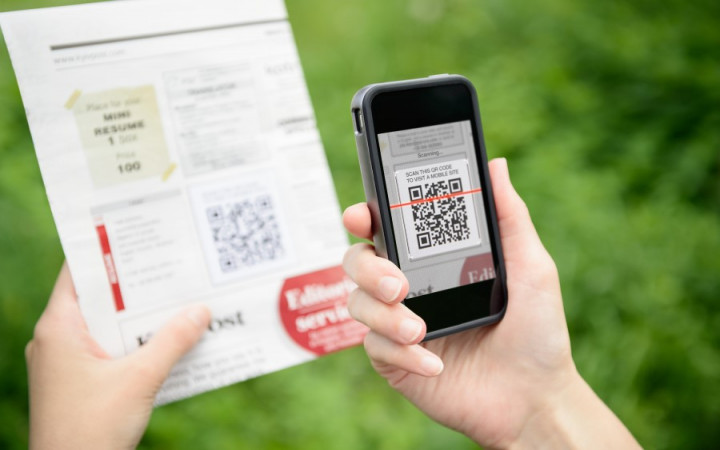Today’s Wonder of the Day was inspired by Alex. Alex Wonders, “How does a qr code work” Thanks for WONDERing with us, Alex!
Have you ever talked with an adult friend or family member about how shopping has changed during their lifetime? If they think way back, they might remember a time when each of the products that lined store shelves had its own individual price tag. When checking out, a store clerk would simply input the price from each tag into the cash register.
So how do things work today? You've probably noticed that most store shelves have price tags on the shelves, rather than the individual items. Instead, each item has a bar code that clerks simply scan. Cash registers now have sophisticated computers that read bar codes that contain information about the product and its price.
If you've been paying attention when you've been out and about in the world, you may have noticed that there's a new type of bar code popping up in stores, movie theaters, restaurants, magazines, and all sorts of different places. These new codes look a bit like a black and white futuristic puzzle. What are we talking about? QR codes, of course!
A QR code®, which stands for Quick Response code, is the trademark of a specific type of two-dimensional bar code that was originally developed for the Japanese automotive industry. QR codes are sometimes called matrix bar codes.
QR codes are considered two-dimensional, because they can store information in two directions. Whereas a normal one-dimensional bar code can only hold about 20 characters of information horizontally, QR codes can store information both horizontally and vertically.
Two-dimensional storage greatly increases the amount of information QR codes can hold. Instead of 20 characters, a QR code® can hold more than 4,000 characters of text and over 7,000 digits of binary data.
To read a QR code®, you need a scanner. Luckily, you don't need the size and type of scanner you find at your local grocery store. Instead, with the download of a special app, most smartphones today contain scanning technology that can easily read QR codes and several other types of bar codes.
QR codes contain black modules (what we see as black, square dots) arranged in a pattern on a square grid against a white background. These modules contain customized data, along with a finder pattern and an alignment pattern that make them easy to read by scanning devices.
Scanning devices also use Reed-Solomon error correction technology to process QR codes. This allows QR codes to be read even when they are worn or distorted. Once processed and interpreted, the customized data can be extracted from the patterns found in the horizontal and vertical dimensions of the QR code® image.
So why are QR codes so popular? They got their start helping Japanese auto manufacturers keep track of thousands of complex automotive parts. Today, though, QR codes are increasingly being used in marketing and advertising.
For example, a QR code® on a movie advertisement can take you directly online to a trailer for the new movie. Likewise, QR codes on any type of product can take potential consumers directly to the Internet for a wide variety of content intended to influence someone to purchase the product.
Moreover, scanning a QR code® allows a company to gather data about the person who scanned it, including what type of device it was scanned with, where it was scanned, and the time of day it was scanned. This type of data can help marketers to focus their use of advertisements to make them more effective.





